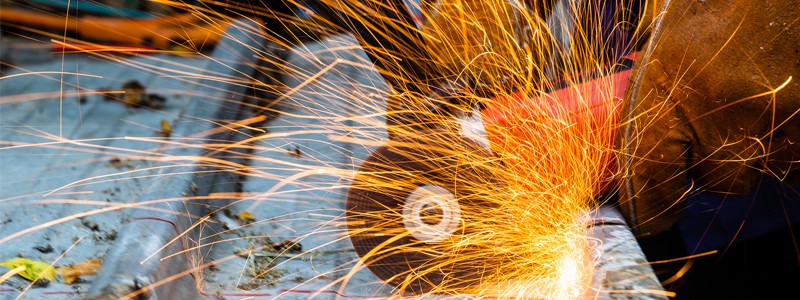Navigating the Hazards of Abrasive Wheels: Training That Saves Lives
Abrasive wheels are a common tool in various industries, from construction to manufacturing. However, they come with significant safety risks that can lead to serious injuries or even fatalities if not handled correctly. Understanding these risks and the importance of proper training is essential for ensuring workplace safety.
Common Safety Risks Associated with Abrasive Wheels
When working with abrasive wheels, several hazards need to be identified and mitigated:
- Wheel Breakage: One of the most significant risks is the potential for the wheel to shatter during operation. This can lead to flying debris, causing injuries to the operator and nearby workers.
- Improper Mounting: If not mounted correctly, abrasive wheels can become loose and cause accidents. An unstable wheel can detach from the machine at high speeds.
- Incorrect Usage: Using the wrong wheel for the application can escalate the chance of an accident. Each wheel is designed for specific tasks, and misuse can lead to malfunction.
- Lack of Protective Equipment: Failure to wear appropriate personal protective equipment (PPE) like goggles, gloves, and face shields exposes operators to direct hazards.
- Inadequate Training: A workforce that lacks training on abrasive wheels cannot identify risks, follow safety protocols, or respond effectively to emergencies.
The Importance of Training in Preventing Accidents
Proper Abrasive Wheels Training is crucial to minimizing risks in the workplace. Here’s how it makes a difference:
- Hazard Recognition: Training helps employees identify potential hazards associated with abrasive wheels, enabling them to take precautions before beginning work.
- Safe Operating Procedures: Trainees learn the correct methods for mounting, using, and maintaining abrasive wheels, reducing the likelihood of misuse.
- Effective Use of PPE: Proper training emphasizes the importance of PPE and instructs employees on how to use it effectively, thus providing an additional layer of protection.
- Emergency Response: Through training, employees are prepared for emergencies, knowing how to respond to accidents quickly and efficiently.
Real-Life Case Studies: Training Preventing Accidents
Case studies highlight the critical role that training plays in accident prevention:
- Case Study 1: A manufacturing company incorporated a comprehensive Abrasive Wheels Safety Course after a near-miss incident where a wheel broke during operation. Following the training implementation, there had been no incidents of wheel breakage. Employees reported having a clearer understanding of safety protocols.
- Case Study 2: In a Dublin-based construction site, a team completed an Abrasive Wheels Course Online which highlighted the importance of PPE. After the training, the site reported a 40% decrease in injuries related to abrasive wheels, attributed to improved practices.
Best Practices for Risk Mitigation
To ensure a safe working environment around abrasive wheels, consider the following best practices:
- Regular Risk Assessments: Conduct assessments regularly to identify and address new hazards as they arise.
- Implement Safety Inspections: Routine inspections of equipment and protective gear can prevent malfunctions and wearing out over time.
- Promote a Safety Culture: Encourage open communication about safety concerns among employees to foster a culture of safety.
- Enroll in Certified Training Programs: Ensure that all employees working with abrasive wheels undergo Certified Abrasive Wheels Training to stay updated on the best practices and safety measures.
Conclusion: Invest in Safety Today
Using abrasive wheels is inherently risky; however, proper training can greatly reduce these risks. As organizations strive for safety compliance, investing in Abrasive Wheels Certification Dublin and other training courses is paramount. Don’t leave your employees' safety to chance—enroll them in a certified Abrasive Wheels Training program today and create a safer workplace.
For more information on Abrasive Wheels training, contact us at [email protected].



 349,500 Offered Certificates
349,500 Offered Certificates
 24/7 Online Training
24/7 Online Training
 Money Back Guarantee
Money Back Guarantee
 Fully Accredited Courses
Fully Accredited Courses
